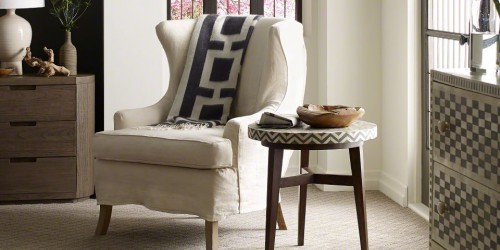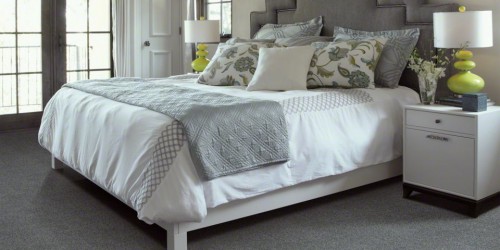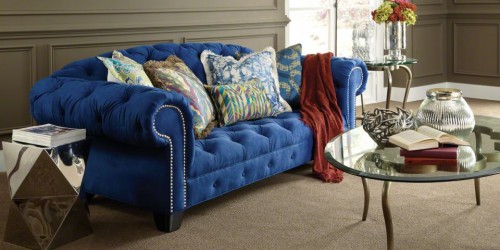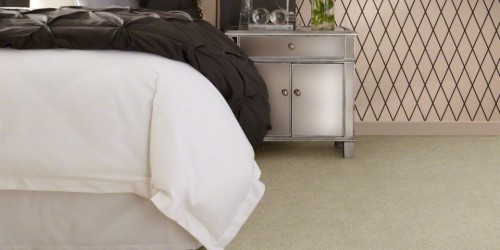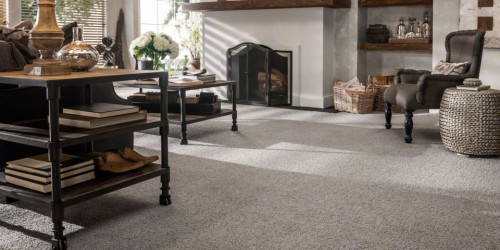Jade Floors unique business approach gives you the chance to buy carpet at the lowest price in the business. Fort Collins based Jade Floors does not have a showroom, employees or other types of traditional expenses. This allows Jade Flooring to provide carpet at nearly wholesale prices to both residential and commercial customers.
All of Jade Floors carpet installers are individual contractors. This means you get an installer that bids on every project and cares about every project. With Jade Flooring you get affordable carpet, plus installers you can trust. This is Jade’s promise to every valued customer.
If you live in or near Fort Collins, Colorado, and want new carpet installation for your home or business, then contact Jade Floors today. Our selection of carpet is extraordinary and our prices cannot be beat. We will help you find the carpet that fits you best. Call today to find out more!
 Call us today for a free carpeting estimate in Fort Collins, Colorado.
Call us today for a free carpeting estimate in Fort Collins, Colorado.
970-226-5233
We Have A Huge Selection Of Carpet To Choose From – Professional Carpet Installation
Construction of Carpet and Rugs
Styles of carpet
To help make the best decision for your lifestyle and budget a few basic principles will help with your understanding your carpet choices.
Cut pile: Probably the most popular constructions, cut pile achieves its durability through the type of fiber used, density of tufts and the amount of twist in the yarn( braided hair holds up better than ratted hair). Highly twisted yarn will hold its shape longer, making it a smart choice for high-traffic areas.
- Textured Plush — Most decoratively versatile. Helps hide vacuum marks and foot prints . Adds causal beauty to any room. Preferred style for busy households. A carpet for the whole house.
- Saxony — Refined surface. Popularized in the eighties this is a very formal look. After you vacuum you might be afraid to walk on it because every one will know.
- Friezé — This is a tightly twisted yarn that actually is twiusted once the yarns have been twisted. Has an informal look. Helps minimize footprints and vacuum marks.
- Plush (Velvet) — Very much like a saxony, don’t walk on it after you vacuum. Best for low traffic areas and formal rooms.
Level loop pile: Often referred to as commercial carpet or sometimes indoor/outdoor type carpet. Some of the berber style of carpets that were popular in the 90’s had the label of level loop carpet.
Multi-level loop pile: This style could be referred to as textured loop usually having two to three different loop heights. Provides good durability and a more casual look.
Cut-loop pile: Once predominately used in Hotels and such with colorful patterns it has started to make its way into residential homes but usually more solid in color with an array of colors.
Facts on Carpet Fibers
With so many options of carpet out there their is a fit for every carpet fiber out there.
Nylon: Two types, Nylon 6,6 and Nylon 6, are typically used in carpet. Nylon features include the ability to produce a variety of color schemes, luxurious soft “hand”, excellent resiliency, durability, abrasion resistance and texture retention. Other features include good resistance to stains and soils. Nylon is considered to be suitable for all types of traffic. Solution dyed nylon provides excellent color fastness and increases stain cleanability.
Olefin (polypropylene): Olefin features include its inherent and permanent resistance to water-based stains, its colorfastness and resistance to static electricity. Olefin is resistant to moisture, making it the primary fiber used in indoor/outdoor carpet.
Polyester: Polyester features include its luxurious soft “hand’, inherent and permanent stain resistance, and ability to produce bright colors. Other features include good abrasion resistance, fade resistance, and cleanability.
Triexta: Triexta features include its luxurious soft “hand”, excellent colorfastness and bright colors, inherent and permanent stain resistance. Other features include durability, resistance to fading, cleanability, texture retention and resiliency.
Wool: Wool is a natural fiber noted for its luxury and performance. Its features include soft “hand”, high bulk, color variety and inherent flame retardant characteristics.
Benefits of Carpet
Carpet, It just feels better.
It’s true, Carpet feels better and then add in the thermal benefits( it holds warm air longer and has r-value) I personally believe that their is a carpet made for every room in the house.
The style and beauty of carpet
With thousands of carpet styles and colors you will want to personalize your living space to reflect on you.
Reduces noise
Big screen TVs, speaker phones, computers and modern sound systems make our homes noisy places. Carpet helps absorb these sounds. Adding a cushion pad beneath your carpet reduces noise even further. Carpet also works as a sound barrier between floors by helping to block sound transmission to rooms below. And carpet on stairs helps mask the sound of constant foot traffic.
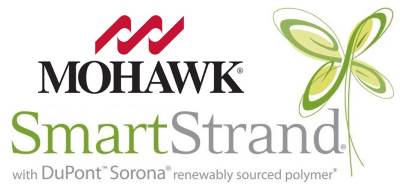 Softens slips and falls
Softens slips and falls
Carpet is ideal for cushioning our footsteps, reducing slips and falls and minimizing injuries when falls do occur. Carpet provides safety protection for the whole family, but especially for toddlers and older individuals.
Wears well
The main thing to remember about carpet is to maintain your carpet. What this means is to vacuum your carpet regularly and when you spill clean it up quickly!
Three steps for proper carpet care
Carpet cleaning is just like exercise! If you get into a routine and keep it up, you will see great results and feel better for it. And understanding the right way to clean carpet will help you save time by doing it correctly the first time with products that do the job right from the start. Not only will Seal of Approval cleaning products help keep your carpet looking great, they can also help meet the warranty requirements of the carpet manufacturer. Below are three simple steps to keeping your carpet clean and looking great:
- Vacuum at the right frequency with a CRI-approved vacuum.
- Clean spots and spills quickly with products that do not damage the carpet or cause it to resoil quicker.
- Professionally deep clean your carpets every 12 to 18 months to remove embedded dirt and grime.
Stop dirt at the door
Preventing dirt and grime from getting on the carpet in the first place is a great way to start keeping it clean. The following helpful hints can stop dirt in its tracks.
- Use mats — Outdoor and indoor mats or runners can reduce the amount of dirt that enters the house.
- Take off your shoes — You can save wear and tear on carpet by asking everyone to take off his or her shoes before entering your home.
- Change your air filters — Change air filters in your heating and air-conditioning systems as recommended by the manufacturer’s directions. The more dust and particles removed by the filter, the less that fall on the carpet.
Select the right carpet pad
Don’t be afraid to upgrade your pad
A firm and resilient carpet pad is necessary to form a good foundation for your carpet, increasing its comfort and extending its life by acting as a shock absorber when someone walks on the carpet. The cushion, or pad, helps buffer sound and provides increased insulation, making a room quieter and warmer.
What’s that myth?
If I buy a better pad I can get away with a cheaper carpeting. You can do this but you will still have a cheap carpet. In other words if you buy a nice carpet buy a nice carpet pad.
When selecting cushion, check the carpet manufacturer’s requirements for thickness and density. Improper selection of carpet cushion can negatively affect carpet appearance, cause wrinkling and buckling, cause separation of the carpet seams and can cause a breakdown of the carpet structure itself. Improper cushion selection also may void any applicable carpet manufacturer’s warranties. A general rule of thumb for most residential carpet applications is to choose cushion no more than 7/16 inch thick and no less than 1/4 inch with 6 pounds per cubic feet density. If the carpet is a Berber or a low profile carpet, choose a cushion no more than 3/8 inch thick with 8 pounds density.
Carpet cushion is made primarily from polyurethane foam, fiber or rubber and is available in a variety of styles and constructions to fit your needs. The type and thickness of cushion you need varies according to traffic levels and patterns. For example, bedrooms, dens, lounge areas and other rooms with light or moderate traffic can use thicker and softer cushion, while living rooms, family rooms, hallways, stairs and other heavy traffic areas require thinner, firmer cushion.
Match the cushion to the carpet
Residential cut pile, cut- loop, or high-level loop carpet requires a resilient, firm cushion with a thickness of 7/16 inch and no less than 1/4 inch with 6 pounds per cubic feet density. Types of cushion may be various polyurethane foams, including the very common bonded foam product often referred to as “rebond,” fiber, or rubber.
Berber carpet or thinner loop or cut pile carpet is made with large, wide loops, and it has been found that a stable, low-flexing, cushion foundation is necessary. A thicker, softer cushion is not acceptable. Cushion thickness should not exceed 3/8 inch for these type products. Again, check with the carpet manufacturer to see if a specific cushion is required.
Common Carpet Issues in Fort Collins, Colorado
Texture warranties
The exact wordage changes but it basically states if the yarn looses its texture it is under warranty except where you walk the most.
Carpet in heavily traveled areas receives the most wear.
For better appearance and longer carpet life, try to reduce the amount of traffic on these areas or use small rugs in front of heavily used chairs or furniture. Remove and clean these rugs while vacuuming the primary carpet or rug. You should occasionally move furniture and reverse area rugs. Although some change will eventually occur in the texture of your carpeting, reducing the wear on paths and in front of furniture will slow this change.
Matting or Crushing
Crushing is the loss of pile thickness because of foot traffic. Crushing is not considered a manufacturing defect unless it is specifically cited in the manufacturer’s warranty. Regular vacuuming may help reduce crushing that result from traffic. Manufacturers’ definitions of crushing may vary. If you are going to walk on it crushing or matting is going to happen.
Color loss from fading
Give your carpet the normal protection from direct sunlight that you would give to any colored fabric. Emissions from heating systems or chemicals, such as pesticides, household cleaning agents and other household items, can also result in color loss.
Filtration soil
Filtration soil may appear as dark or grayish lines on carpet along walls, stairways and under doors. It is caused by airflow over and through carpet, allowing fine soils to settle on the surface. It is often caused by an improperly balanced ventilation system, when the volume of air entering a room exceeds the system’s capacity to remove air from the room. Excess air then seeks exit sources in gaps along walls and stairways. Prevent the airflow through carpet and carpet edges by sealing openings through the carpet and under doors and baseboards. Keeping the air in the area clean and using good filtration in your heating and cooling systems and vacuum cleaners can help. Filtration soils may require special cleaning treatment for effective removal. Contact a carpet-cleaning professional for assistance.
Fluffing and shedding
The balls of fluff, or loose fibers, found on carpeting or in the vacuum cleaner bag are the normal result of fiber left in the carpet from the manufacturing process. Removing these loose fibers does not affect carpet life or appearance. Because of their large size, these fibers are too big to become airborne or to be breathed in. With proper vacuuming and using a quality vacuum cleaner, most shedding gradually disappears within the first year after installation.
Matting
Manufacturers’ definitions of matting may vary. Matting is usually the result of the untwisting of the yarn and the intermingling of the yarn tips through foot traffic. Matting may be caused by various factors, including an improperly specified cushion, cushion failure, or improper maintenance. Matting is not considered a manufacturing defect unless it is specifically cited in the manufacturer’s warranty.
Odor
During and immediately following the installation of your new carpet, there may be a slight odor, which may result from the removal of your old carpet and cushion or from the new carpet, cushion, adhesives or seaming tape. Ventilation with fresh air is recommended. Ideally, windows and doors should be opened, and the HVAC system should be operated at maximum capacity for 48 to 72 hours.
Soiling
Maintain the beauty of your carpet by cleaning it regularly before it becomes excessively soiled. Dirty, airborne particles may be deposited on carpet, causing dulling. Dulling is caused by the deposits of all types of soil. For example, a delicate rose color may gradually become a neutral taupe because of soil, while light blue may take on a dull, gray-green hue. Red clay soil also can cause a pronounced change in some colors. In spite of such phenomena, the original color of a carpet is not lost; it is still present under the soil. Oily soil may be very difficult to remove after it has been on the carpeting for a long time, and it may be actually absorbed into the fiber, causing the carpet to have a yellow cast. Frequent cleanings are important to avoid this problem. Entries mats at doorways trap soil, and combined with routine cleaning and vacuuming, provide extra protection for all floor coverings.
Sprouting
Occasionally, a yarn tuft will rise above the pile surface of a carpet. Just snip off these tufts to the level of the other tufts. DO NOT PULL THEM OUT. If this problem persists in a localized area, contact your flooring contractor or manufacturer’s representative.
Stain-resistant carpet
Almost all carpet manufactured today has finishes that make it more stain- and soil-resistant, but no carpet is entirely stain proof. It still requires care. Remove spots and spills promptly. If spills or soils are allowed to remain, they may become permanent. Call the phone number normally found on the carpet warranty to obtain specific information about cleaning the carpet.
Topical treatments
Topical treatments include soil retardants, stain repellents, anti-static treatments and deodorizers. The use of after-market, topical treatments without the express approval of the carpeting manufacturer prior to application may void applicable warranties.
Wear
Most carpet manufacturers offer “wear” warranties of various time lengths. According to these warranties, “wear” is defined as the loss of pile weight or pile fiber (usually 10 percent) due to abrasive loss of fiber by weight. What appears to be wear, or pile fiber loss, may actually be matting, crushing or permanent fiber damage caused by soiling rather than loss of fiber. There is seldom actual loss of pile fiber. (See also Matting, Crushing.)
Wrinkles, ripples and buckles
Wrinkles, ripples and buckles in carpeting are most often caused by a failure to stretch the carpet correctly using a power stretcher, the use of an incorrect or failed cushion, or excessive temperature and/or humidity. Ripples can be caused by a combination of any of the above. If ripples or buckles develop, consult your carpet retailer. Generally, the problem can be corrected by a qualified Fort Collins carpet installer like Jade Floors, who will reinstall the carpet with a power stretcher.

